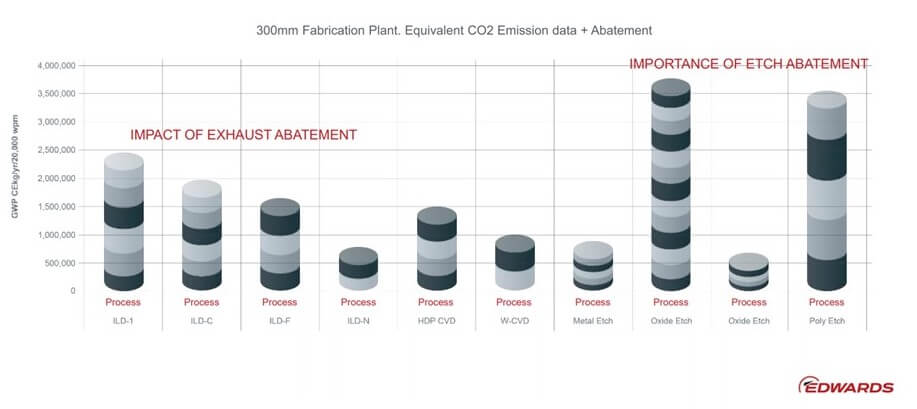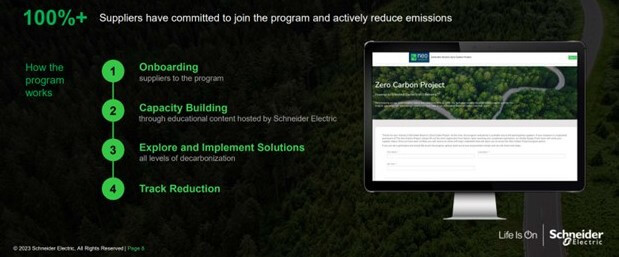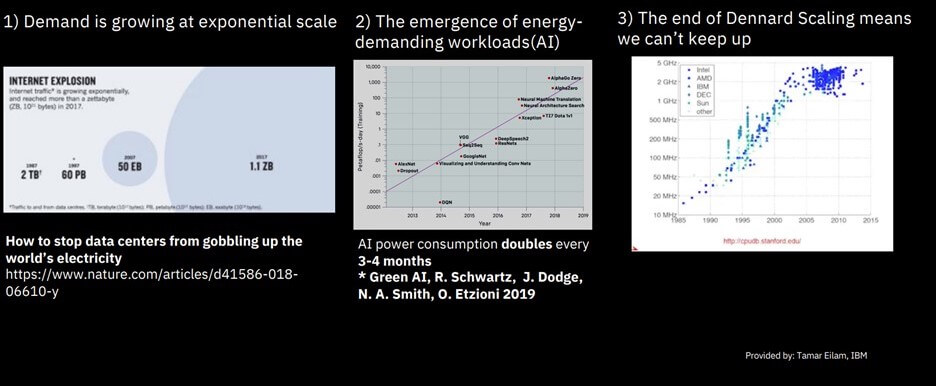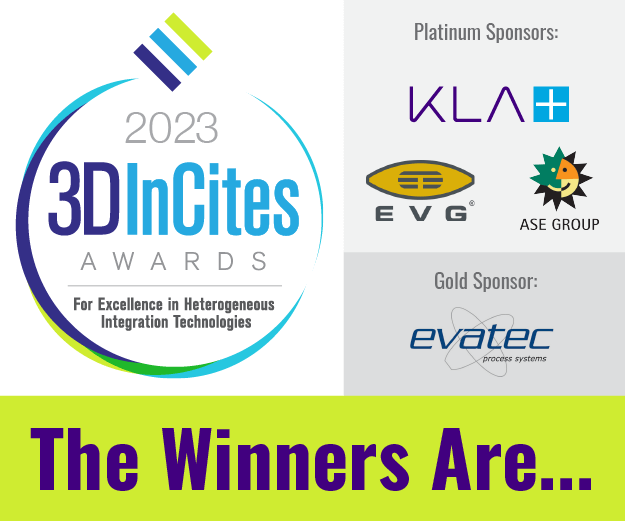Progress in Sustainability has become one of SEMI’s key focus points in supporting its members. It was initiated with a series of keynotes at SEMICON West in 2019, followed by the formation of the SEMI Sustainability Initiative, to help bring focus to the Startups for Sustainability venture capital programs. And the recent formation of the SEMI Climate Consortium, with the initial 65 founding members, has now grown to 77 members as of March 2023.
The SEMI Climate Consortium was created to help define the critical areas where support or improvement in sustainability should be addressed to help the industry lower its greenhouse gas footprint across the entire supply chain.
At ISS Europe there were multiple presentations on sustainability discussing some of the key issues and some solutions that have been implemented or are beginning to be implemented.
In their presentation, BESI discussed environmental impact, which gives a good summary of what most companies are focusing on in the environmental portion of their ESG reports. BESI highlighted:
- Energy use and renewable energy
- Carbon emissions
- Waste and hazardous material use
- Water use
- Sustainable design

These five areas are pretty much in every company ESG report, along with the near-term goals, and the goals for 2030, and 2040 and to be carbon neutral by 2050. The key to success will be if all of the companies can achieve these goals in the allotted time frame.
The Edwards presentation gave an interesting perspective on the work they are doing to help improve the sustainability supply chain. I also appreciate the simplification of the problem when one is able to do so. Edwards gave a simplified definition of Scope 1 and Scope 2 emissions.

At times it appears that as an industry we are trying to overcomplicate things, so when I see a good definition I appreciate it.
Edwards also went on to define and describe some of the areas where the industry needs to look at the importance of abatement.

The Edwards presentation also touched on the topic of recovery or recycling gases. Edwards has been very successful in recycling hydrogen used in the EUV process. Edwards and ASML are currently recovering 74% of the hydrogen used in the EUV process resulting in an estimated CO2 savings of 64 tonnes/year/EUV tool. This is a considerable amount, especially as EUV roles out across the industry.
Edwards is now turning its attention to the recovery and recycling of noble gasses, Krypton, Xenon. The trials are starting in Q1 2023 the expectations are that eventually 90% of the noble gases can be recovered resulting in considerable savings from a CO2 emissions perspective.
Schneider Electric has been a strong proponent of sustainability and is also a charter member of the SCC. The semiconductor and the semiconductor manufacturing arena is part of Schneider’s supply chain, and Schneider is also a supplier to the Semiconductor industry.
Schneider presented its Zero Carbon Project, which will reduce CO2 emissions from Schneider’s top 1000 suppliers by 50%.

Schneider has set up an onboarding implementation and tracking program and has buy-in from 100% of its suppliers.
The programs described above will help to reduce the CHG emissions in the process and in the supply chain, but will that really have a significant impact on the overall problem?
As the IBM presentation pointed out the microelectronics industry has a computer energy problem. Data centers are gobbling up the world’s energy. AI workloads and the energy consumption is increasing on the log scale, and at the moment there is no solution in sight to reduce this level of energy consumption. While the data centers of the world are buying up carbon credits, and renewable energy, it is unlikely there will be enough renewables or carbon credits to achieve carbon neutrality in the data center marketplace.

IBM presented several options for the future, but as the world is shooting for carbon neutrality in the 2050s, and industry is slow to change, these options really need to become into reality very soon to have a significant impact by 2050. There needs to be a change in the AI algorithms, as well as chip designs and performance in the very near future.
It was interesting to note that there was very little mention of conservation. Yes, some server farms are looking at how to use the excess heat to power, and heat other operations, but will this get to the 30% GHG reductions that are needed to meet the desired goals? Edwards is doing a nice job of looking at materials recovery which looks like it will have some big GHG dividends. More of this conservation effort is needed across the entire microelectronics space.
The presentations at SEMI Europe ISS give some excellent examples of the work that is taking place in the environmental sustainability space in the semiconductor industry. I will be very interested in seeing what progress has been made by Semicon West and the direction that the SEMI Climate Consortium plans to go in rolling out ESG across the industry.





















